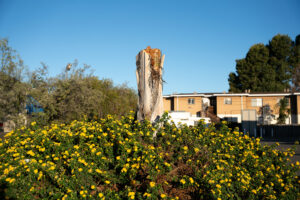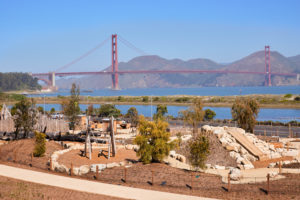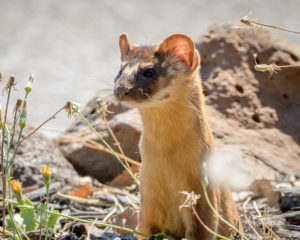It’s a rare clear and sunny May day in Golden Gate Park, 65 degrees by ten in the morning— a promising outlook for sighting butterflies at Strawberry Hill, a designated urban island butterfly habitat in the middle of Stow Lake.
A pack of garden volunteers roam around the top of the hill following Andy Stone, a park section supervisor with San Francisco’s Recreation and Parks Department. He points out what needs to be done for the day— trim back the Cape ivy so a few young oak trees growing out of the side of the hill can have some breathing room, tear out the brome grass along the hiking path, and plant new flowers for the butterflies and bees that frequently visit the hill.
“Gardening is just the illusion of control. It’s kind of like life in that way,” says Stone, who also oversees the volunteer gardening day at Strawberry Hill. Stone has been a gardener at Golden Gate Park for 35 years. At the Strawberry Hill volunteer day— the second Saturday of every month rain or shine— he moves swiftly around the plants, picking out the edible parts and leaves of mallow, wild radishes, and a plant in the broccoli family. He urges the volunteers of all ages to try some. While Stone is an impressive flora expert, he admits his butterfly identification isn’t up to par.
“Ninety percent of butterflies become bird food,” says Stone, but he concludes he’s seeing more butterflies this season than previous. “Probably because we are planting more things they like.”
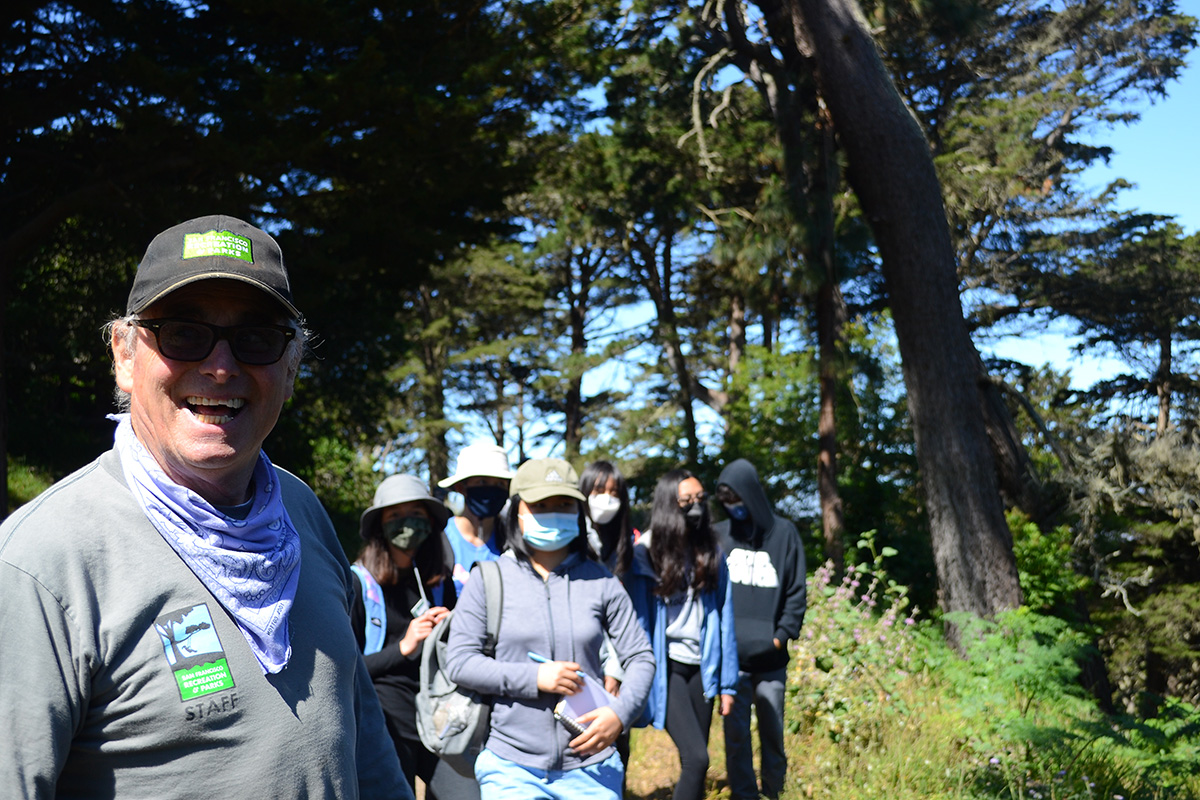
And what do butterflies like? It depends, says Arthur Shapiro, a lepidopterist and professor of evolution and ecology at University of California, Davis. Variables include species, life stage, time of year, and where nectar is available. Whether or not a chrysalis or an adult is overwintering at a particular place. Monarchs are well known to prefer milkweed, while pipevine plants host their namesake pipevine swallowtails.
Exposure to sunlight for a significant part of the day is mandatory, says Shapiro, a requirement that is sometimes hard to come by at Strawberry Hill, with San Francisco’s ubiquitous summer fog. Yet butterflies still decide to visit the habitat, due to its abundance of flora throughout the seasons, and its dedicated stewards who, over many generations, made Strawberry Hill, an island in the fog, a butterfly haven.
It also is a matter of biology, Shapiro notes — when gathering nectar, an essential food source, an adult butterfly needs a platform on a flower or plant to place its feet and have the correct dimensions to insert its proboscis into a flower’s nectar source. So, for example, “Yarrow is appropriate for hairstreaks, but does nothing for painted ladies and monarchs,” Shapiro says.
Some flora give a variety of butterflies a good meal, or a good place to lay eggs, or shelter, such as lupine, certain species of asters and goldenrods, and pennyroyal. For urban butterfly habitats, whether it’s a community garden in Oakland, a backyard garden in San Ramon, or within a public park, like Strawberry Hill, the goal is to “plant intelligently to provide them with the resources they need,” Shapiro says.
Within the group of people dedicated to planting flowers to support pollinators, there’s a longstanding debate over which species to prioritize.
Stone prefers to plant California native plants, when possible, at Strawberry Hill. Matthew Shepherd, the director of outreach and education for The Xerces Society for Invertebrate Conservation, a pollinator advocacy nonprofit, concurs. “Native plants support caterpillars,” Shepherd says. “All you need to think about are native plants.”
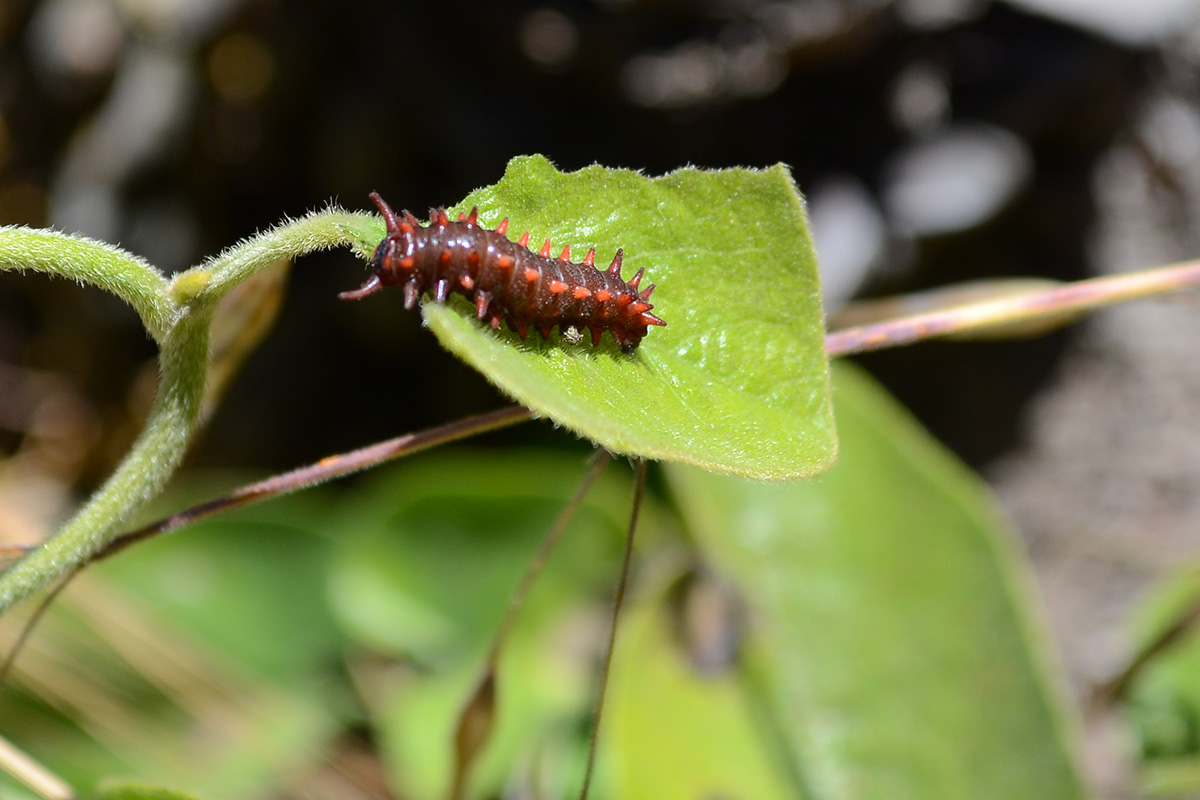
Shapiro has often said otherwise. He advocates for what he calls a “whatever works,” approach for butterfly habitats. Shapiro says he’s seen butterflies and plants continually evolve to change their relationships with each other, allowing butterflies to find new hosts on nonnative plants. And it necessarily isn’t a bad thing. “I am sick to death of being told you must use natives,” he says, “especially if a butterfly has no more interest in it than a fire hydrant.”
In some cases, Shapiro says, native plants haven’t recovered and the more common nonnative plants that have replaced them have become essential to butterfly health. Yellow star thistle (Centaurea solstitialis) is native to the Mediterranean and toxic to horses, but also provides an indispensable source of nectar for butterflies in the summer. Although commonly viewed as a widespread noxious weed, some butterflies have come to depend on it, because of its hardiness and its long bloom season, Shapiro says. “You should not limit yourself to natives,” he says. “Personally, I think [planting nonnatives] is worth it.”
Wildfires in California in the last few years have accelerated “chemically mediated” evolutionary adaptation to some nonnative species when a butterfly’s host native plant isn’t available. For example, the butterfly bush (Buddleia davidii) isn’t native to California, yet butterflies are attracted to it because a chemical receptor it gives off triggers egg laying. After a few generations, butterflies will spontaneously lay eggs on it. “There is better living through chemistry,” Shapiro says.
Strawberry Hill is one of the many urban butterfly habitats that tick off lots of variable boxes for a robust butterfly population, where numerous species live out their lives. There can be many different “hotspots” within the same urban area, but a few factors are essential.
The place needs to support the four life stages of a butterfly — egg, larva, chrysalis, and adult. And what may be a butterfly’s host plant for eggs isn’t the same one it uses for its foraging. Shelter from cold weather and a safe place free of disturbance for the chrysalis are equally important. Additionally, there needs to be a free flow of air for butterfly flight. While streets can act as a wind tunnel, a species that mass migrates needs unobstructed sky. Lastly, the site needs to be free of pesticides, which is what makes a lot of urban pollinator habitats unique from garden plots or agricultural land.
“San Francisco is ahead of the curve in terms of pesticide use,” says Shepherd. In most San Francisco public parks, pesticides aren’t used, particularly the insecticides made with neonicotinoids, chemicals that cause flight and taste problems for pollinators. Shepherd says many public park districts are moving away from pesticide use altogether.
What Shepherd says he finds most rewarding, however, is the transformation of attitudes toward protecting pollinators, and the places they call home. The standard for a great public park with plenty of green space and pollinator support no longer looks like an Olmsted Brothers project, with mown grass and nicely spread trees. Instead, Shepherd says, city park departments are purposefully creating wildflower meadows that may look a little untidy.
At Strawberry Hill, volunteers are told to plant new flowers anywhere there is room for them, after the weeds are pulled. “The wheel is turning and people are looking to rebuild the ecological value of spaces,” Shepherd says.
The raised awareness of the importance of pollinators, within ecosystems, and within the food web, hasn’t gone unnoticed at the park district level. Due to a groundswell of engagement by the public, Shepherd says, park departments are hiring people whose studies included pollinator support, and are able to create change at a park district level.
“It’s exciting to see it pick up momentum,” he says. “Climate change is a motivator for some people. [It’s a] push for change.”
After a few hours of pulling weeds and hacking ivy, the Strawberry Hill volunteers depart for the day, while Stone continues his never-ending work. Near him a West Coast lady butterfly gently flutters from one seaside daisy to the next. It’s spending a lazy day at home.


